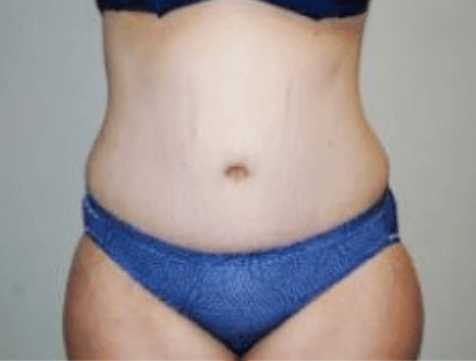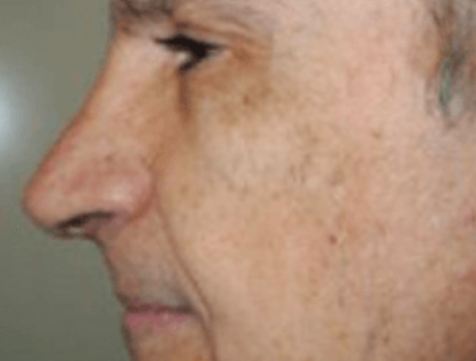Undergoing rhinoplasty surgery is a significant decision that can lead to transformative changes in both appearance and self-confidence. However, achieving your desired results continues beyond the operating room. A crucial aspect of the rhinoplasty process is the recovery period, during which your body heals and adjusts to the alterations made to your nasal structure. This comprehensive guide will delve into every aspect of rhinoplasty recovery, providing you with the knowledge and tools necessary to navigate this crucial phase with confidence.
Contents
Understanding Rhinoplasty Recovery: What to Expect
Before diving into the specifics of rhinoplasty recovery, it’s essential to have a clear understanding of the procedure itself. Rhinoplasty, commonly referred to as a “nose job,” is a surgical procedure aimed at altering the size, shape, or proportions of the nose to achieve a more aesthetically pleasing appearance or improve nasal function.
During rhinoplasty surgery, your plastic surgeon will make precise incisions to access the underlying nasal structures. Depending on your unique goals and anatomical considerations, they may remove or reshape cartilage and bone, adjust the nasal tip, or refine the nostrils. Once the desired changes have been made, the incisions are meticulously closed, and a splint or nasal packing may be applied to support the newly sculpted nose during the initial stages of healing.
The Recovery Timeline: What to Expect During Each Stage
Rhinoplasty recovery is a gradual process that unfolds over several weeks and months. While every patient’s experience may vary slightly, there are general milestones and stages that most individuals can expect to encounter during their recovery journey.
IMMEDIATE POST-OP PERIOD (DAYS 1-7):
- Swelling and Bruising: It’s normal to experience significant swelling and bruising around the nose and eye area immediately following rhinoplasty surgery. This is a natural response to the trauma of surgery and typically peaks within the first 48 hours before gradually subsiding.
- Discomfort and Pain: While discomfort and mild pain are expected during the initial postoperative period, your surgeon will prescribe pain medication to help manage any discomfort. Additionally, applying cold compresses to the nasal area can help alleviate swelling and discomfort.
- Activity Restrictions: During the first week of rhinoplasty recovery, it’s essential to avoid strenuous activities, heavy lifting, and bending over to minimize the risk of bleeding, swelling, and complications. Plan to take time off work or school to rest and focus on your recovery.
EARLY RECOVERY PHASE (WEEKS 2-4):
- Decreasing Swelling and Bruising: As the initial swelling begins to subside, you may notice gradual improvements in the appearance of your nose. However, it’s essential to remain patient, as residual swelling may persist for several weeks or even months.
- Suture Removal: If non-dissolvable sutures were used during your rhinoplasty procedure, your surgeon may remove them during a follow-up appointment within the first two weeks post-op.
- Gradual Resumption of Activities: While it’s still crucial to avoid strenuous activities and heavy lifting during this phase of recovery, you may begin to gradually resume light activities and return to work or school, depending on your surgeon’s recommendations.
INTERMEDIATE RECOVERY PHASE (WEEKS 5-8):
- Continued Improvement in Swelling: By the fifth week of rhinoplasty recovery, most patients experience significant improvements in swelling and bruising. However, it’s essential to continue practicing patience, as subtle swelling may persist, particularly in the nasal tip area.
- Resuming Exercise and Physical Activity: With your surgeon’s approval, you may gradually reintroduce moderate exercise and physical activity into your routine. However, it’s crucial to listen to your body and avoid activities that cause discomfort or strain on the nasal area.
- Nasal Sensations: During this phase of recovery, you may notice changes in the sensation of your nose, including numbness, tingling, or hypersensitivity. These sensations are normal and typically resolve over time as the nerves in the nasal tissues regenerate.
LATE RECOVERY PHASE (MONTHS 3-6 AND BEYOND):
- Final Results Take Shape: By the third-month post-op, the majority of swelling should have resolved, allowing your final rhinoplasty results to become more apparent. However, subtle changes may continue to occur as your tissues settle and heal over the ensuing months.
- Sun Protection: As your skin continues to heal and regenerate, it’s essential to protect your nose from sun exposure to prevent sunburn and minimize the risk of hyperpigmentation. Apply a broad-spectrum sunscreen with an SPF of 30 or higher, and wear a wide-brimmed hat when outdoors.
Tips for Optimizing Rhinoplasty Recovery
Now that we’ve outlined the general timeline and stages of rhinoplasty recovery let’s explore some practical tips and strategies for optimizing your post-operative experience:
- Follow Your Surgeon’s Instructions: Dr. Amy Bandy will provide you with detailed post-operative instructions tailored to your specific needs and surgical approach. It’s crucial to adhere to these instructions diligently to promote optimal healing and minimize the risk of complications.
- Attend Follow-Up Appointments: Regular follow-up appointments with Dr. Bandy are an essential aspect of your rhinoplasty recovery journey. These appointments allow your surgeon to monitor your progress, address any concerns, and make adjustments to your treatment plan as needed.
- Stay Hydrated and Eat a Nutritious Diet: Proper hydration and nutrition play a vital role in supporting your body’s healing processes. Drink plenty of water and consume a balanced diet rich in vitamins, minerals, and protein to promote tissue repair and regeneration.
- Avoid Smoking and Alcohol: Smoking and excessive alcohol consumption can impair circulation, delay healing, and increase the risk of complications during rhinoplasty recovery. If you smoke, it’s essential to quit smoking at least two weeks before your surgery and refrain from smoking during the entire recovery period.
- Be Patient and Realistic: Remember that rhinoplasty recovery is a gradual process, and it may take several months for your final results to fully manifest. Be patient with your body’s natural healing process and trust in the expertise of Dr. Amy Bandy to guide you through every step of your journey.
Call Dr. Amy Bandy Today!
Ready to embark on your rhinoplasty journey with confidence? Schedule a consultation with Dr. Amy Bandy today at 949-779-8714 and take the first step towards achieving the nose of your dreams!
FAQs
How long does rhinoplasty recovery take?
While the initial stages of recovery typically last 1-2 weeks, it may take several months for swelling to subside entirely and final results to become apparent.
Will I experience pain during rhinoplasty recovery?
Discomfort is normal during the initial stages of recovery, but your surgeon may prescribe pain medication to manage any discomfort.
When can I resume normal activities after rhinoplasty?
It’s essential to avoid strenuous activities and heavy lifting for at least 2-4 weeks following rhinoplasty surgery. Your surgeon will provide guidance on when it’s safe to resume normal activities.
Are there any risks or complications associated with rhinoplasty?
As with any surgical procedure, there are potential risks and complications associated with rhinoplasty, including infection, bleeding, and adverse reactions to anesthesia. However, these risks can be minimized by choosing a board-certified plastic surgeon and following post-operative instructions diligently.
How can I speed up the rhinoplasty recovery process?
While the recovery process cannot be rushed, following your surgeon’s post-operative instructions, maintaining proper hygiene, and taking time to rest can help promote optimal healing and minimize downtime.













